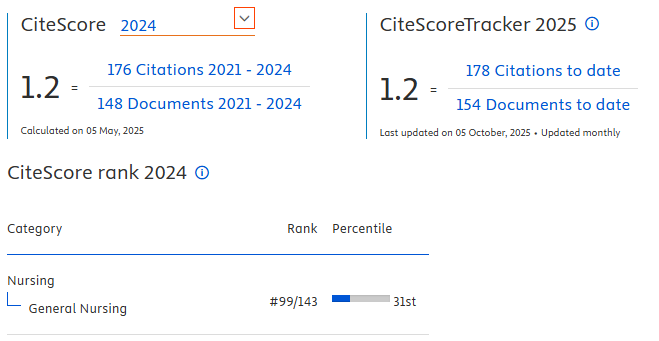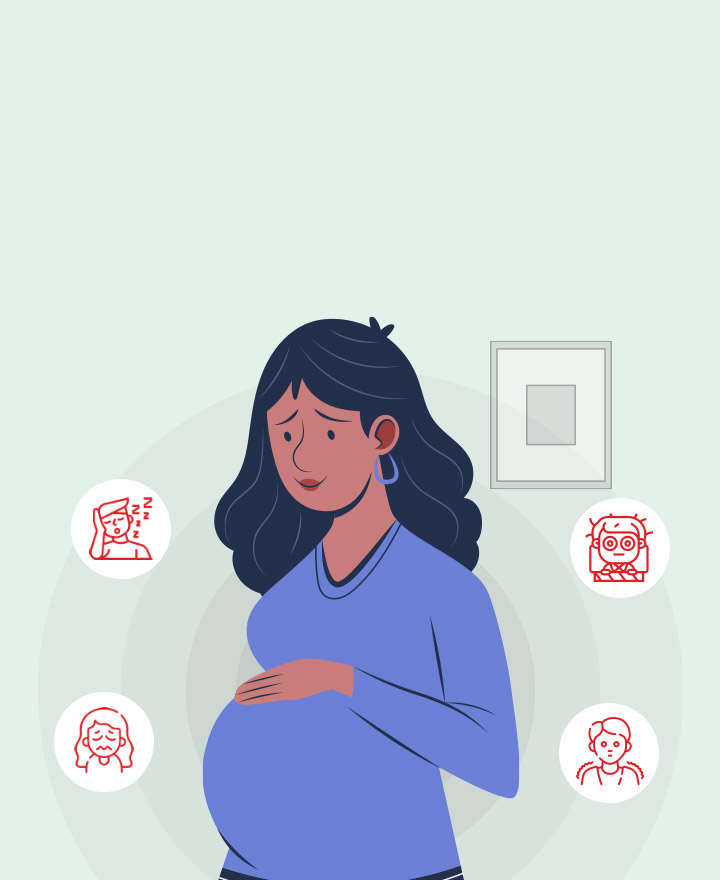Guideline for Author
We now differentiate between the requirements for new and revised submissions. You may choose to submit your manuscript as a single Word file to be used in the refereeing process. Only when your paper is at the revision stage, will you be requested to put your paper into a 'correct format' for acceptance and provide the items required for the publication of your article.
Selection of papers for publication is based on their scientific excellence, distinctive contribution to knowledge (including methodological development) and their importance to contemporary nursing, midwifery or related professions. Submission to this journal proceeds fully online, and you will be guided stepwise through the creation and uploading of your files.
The manuscript should be written in Ms. Word format. Figure, illustration, and picture are included in manuscript file. Submit manuscript directly to http://e-journal.unair.ac.id/index.php/JNERS. Jurnal Ners will automatically reject any manuscript submitted via email or hardcopy.
The Editorial Board determines feasible manuscript after obtaining recommendations from peer reviewers. Manuscript revision is author responsibility, and manuscripts that are not feasible will be returned to the author.
1. Ethics In Publication
This journal follows the Committee of Publication Ethics (COPE) guidelines and requests authors to familiarize themselves with these guidelines at: http://publicationethics.org/resources/guidelines. Authors should pay particular attention to the following points: If they have legitimate reasons for reporting separately on different parts of the same study or data set, they must justify this to the editor at the time of submission. Additionally, readers should be informed if different aspects of the same study are being reported. Therefore, the methods section of the submitted manuscript must clearly explain why the paper warrants separate reporting.
2. Types Of Manuscript
2.1 Original Articles
Original articles should present clinical studies or research that have not been previously published or are not under consideration for publication elsewhere. The manuscript should not exceed 7,000 words, including the list of authors and their affiliations, corresponding author information, acknowledgments, and figure legends. An abstract of no more than 250 words is required. References should primarily come from international journals indexed by Scopus or Web of Science, and the manuscript may include a maximum of five figures or tables.
2.2 Systematic Reviews
Systematic reviews are comprehensive, critical assessments of evidence from various data sources related to a specific topic in the field of nursing. A systematic search of relevant data sources must be conducted, and the collected items should be evaluated carefully for inclusion based on predefined inclusion/exclusion criteria. The review should include a detailed description and an analytical graphical representation of the process. The characteristics of the participants or patient populations in the studies included must be described, along with the measures of exposure and outcomes, indicating the corresponding data sources. A structured abstract is required, following the same format as for short reviews. The text should not exceed 7,000 words, including acknowledgments, and may include up to four tables and/or figures.
2.3 Meta-analyses
Meta-analyses should adhere to the same guidelines as systematic reviews. They are expected to provide comprehensive information and a statistical assessment of pooled estimates for predefined outcomes, study heterogeneity and quality, potential publication bias, meta-regression, and subgroup analyses where appropriate. Authors are encouraged to submit PRISMA flow diagrams, depending on the type of study. Both systematic reviews and meta-analyses will follow the same editorial process as original articles.
3. Submission Preparation
Submission preparation ensures that a manuscript meets the journal's initial requirements before submission. Authors must format their manuscripts according to the journal's guidelines, including adhering to the proper structure, citation style, and file organization. Additionally, required documents such as a cover letter and ethical declarations must be prepared and submitted along with the manuscript.
3.1 Language
Please ensure your manuscript is written in clear and correct English; both British and American English styles are accepted. Authors who believe their manuscript may benefit from language editing to correct grammatical or spelling errors and to align with proper scientific English conventions are encouraged to use an English Language Editing service. Any additional costs incurred will be the responsibility of the author.
3.2 Essential Requirements Before Submitting Your Manuscript
To ensure a smooth submission process and compliance with Jurnal Ners standards, please prepare the following essential requirements before submitting your manuscript:
- Reference Management: The manuscript must utilize a reference manager (Mendeley is recommended).
- Title Page: Include a complete title page as per the journal's guidelines (Template HERE).
- Ethics Approval: Attach the ethics approval number and specify the ethics committee institution in the manuscript.
- Plagiarism Check: Provide a plagiarism check report with a similarity index of less than 20%.
- Template Compliance: Ensure the manuscript is formatted according to the Jurnal Ners template (Template HERE).
Submissions that fail to meet any of these five requirements will be immediately rejected. Authors may revise their manuscripts to address the issues and resubmit it for further consideration.
3.3 Reporting Guideline
The reporting guidelines endorsed by the journal are listed below:
3.3.1 Observational cohort, case control, and cross-sectional studies - STROBE - Strengthening the Reporting of Observational Studies in Epidemiology, http://www.equator-network.org/reporting- guidelines/strobe/
3.3.2 Qualitative studies - COREQ - Consolidated criteria for reporting qualitative research, http://www.equator-network.org/reporting-guidelines/coreq
3.3.3 Quasi-experimental/non-randomized evaluations - TREND - Transparent Reporting of Evaluations with Non-randomized Designs, http://www.cdc.gov/trendstatement/
3.3.4 Randomized (and quasi-randomized) controlled trial - CONSORT - Consolidated Standards of Reporting Trials, http://www.equator-network.org/reporting-guidelines/consort/
3.3.5 Study of Diagnostic Accuracy/assessment scale - STARD - Standards for the Reporting of Diagnostic Accuracy Studies, http://www.equator-network.org/reporting-guidelines/stard/
3.3.6 Systematic Review of Controlled Trials - PRISMA - Preferred Reporting Items for Systematic Reviews and Meta-Analyses, http://www.equator-network.org/reporting-guidelines/prisma/
3.4 Submission Preparation Checklist
Indicate that this submission is ready to be considered by this journal by checking in the following (comments to the editor can be added below).
- As part of the submission process, authors are required to ensure their manuscript complies with all of the following items. Submissions that do not adhere to these guidelines may be returned to the authors.
- The author(s) have not included any personal information that could make a patient’s identity recognizable in any description, photograph, or pedigree. If photographs of patients are essential and indispensable for scientific purposes, the author(s) must obtain written consent and clearly state this in the manuscript.
- In case of experimenting on humans, the author(s) have certified that the process of the research is in accordance with the ethical standards of the Helsinki declaration, as well as any domestic and foreign committees that preside over the experiment. If any doubts are raised as to whether the research proceeded in accordance with the Helsinki declaration, then author(s) are required to explain it. In the case of experimenting on animals, the author(s) have certified that the author(s) had followed the necessary domestic and foreign guidelines related to experimenting on animals in a laboratory.
- The author(s) have received consent from the author or editor of any pictures or table quoted from other journals or books. A portion or the entirety of the article must not have been published in other journals, nor must it have contributed to other journals or is still under review.
- The author(s) undersigned hereby give the Faculty of Nursing Universitas Airlangga the rights as publisher, the right of first publication of all published material. It will be licensed under a Creative Commons Attribution 4.0 International License.
- Author(s) of the journal have clarified everything that may arise such as work, research expenses, consultant expenses, and intellectual property on the document in relation to the ICMJE form disclosure of conflicts of interest.
3.5 COPYRIGHT NOTICE
Authors who publish with Jurnal Ners agree to the following terms:
- Authors transfer the Copyright and grant Jurnal Ners the right of first publication with the work simultaneously licensed under a Creative Commons Attribution 4.0 International License that allows others to remix, adapt and build upon the work with an acknowledgment of the work's authorship and of the initial publication in Jurnal Ners.
- Authors are permitted to copy and redistribute the journal's published version of the work (e.g., post it to an institutional repository or publish it in a book), with an acknowledgment of its initial publication in Jurnal Ners.
Jurnal Ners requires a formal written declaration and transfer of copyright from the author(s) for each article published. We, therefore, ask you to complete and return this form, retaining a copy for your own records. Your cooperation is essential and appreciated. Any delay will result in a delay in publication. The form can be downloaded HERE.
4. Submission Of Manuscripts
All manuscripts, correspondence and editorial material for publication is submitted online at http://ejournal.unair.ac.id/index.php/JNERS simply need to "create a new account" (i.e., register) by following the online instructions, and using their own e-mail address and selected password. Authors can submit manuscripts online. Authors can expect an initial decision to undergo peer-review.
5. Editorial Process
The editorial process refers to the structured steps undertaken by a publisher or journal to evaluate and decide whether a manuscript is suitable for publication. Generally, this process should take a maximum of 4 months, depending on the complexity of the manuscript, the quality of the research, and the efficiency of the editorial system.
5.1 Initial Assessment submission
The Initial Assessment submission involves a review of several administrative requirements to ensure the manuscript meets Jurnal Ners standards. During this stage, the following elements will be checked: Title Page (template here); Reference Style and Citation Management; Ethics Documentation; Turnitin Similarity Report less than 20%. Template Compliance (template here). This initial assessment ensures that submissions align with the journal’s requirements before moving forward in the review process. Please note that if any of these elements are missing, Jurnal Ners will decline the submission. The author may then make the necessary corrections and resubmit. this stage typically takes between 1-2 days of submission.
5.2 Initial Editorial Assessment
Jurnal Ners is eager to provide a rapid publication process through an initial assessment conducted by an editorial committee consisting of the editorial team members. The primary purpose is to decide whether to send the paper for peer-review or to reject it. The main point is scope, compliance with the guideline, and language. Sometimes a paper will be returned to the author with a request for revisions with the purpose to help editors in deciding whether or not to send it out for review. Authors may expect the decision of the Initial Editorial Assessment from this stage of the review process within 1-7 days of submission.
5.3 Review Process
After passing the Initial Editorial Assessment, the article will be sent to peer-reviewers. The peer-review process involved at least two reviewers for each manuscript selected based on their expertise. All reviewing process is done by the double-blind review, which means the authors and peer-reviewers do not know each other’s identity. The reviewers should complete the review within 4-8 weeks in each reviewing round after the review request was sent. Editors can offer feedback on manuscripts that have already undergone revisions by reviewers. This is aimed at supplementing the input to make the article feedback more comprehensive.
5.3.1 Review Criteria
Each paper that the editor/s assess as suitable for peer review is allocated to two reviewers who are asked to assess the paper against one of the Journal's three sets of reviewing criteria: Articles submitted for review must be original works, and may not be submitted for review elsewhere whilst under review for the Journal. After review, the Editor-in-Chief will inform the corresponding author on whether the paper has been accepted, rejected, or needs revision. Categories of decision: (a) Accept Minor revisions (accept with revisions as advised by Editors); (b) Major revisions (possible acceptance following major revision and resubmission); (c) Rejection (rejected manuscript will be sent back to authors). All efforts are made to provide fair and thorough reviews as speedily as possible. If an author(s) believes that a manuscript has been wrongly rejected, a detailed appeal letter that responds point-by-point to the reviewers' comments should be sent to the Editor who, after having reviewed the referees' reports, will make the final decision. For these types of submissions, the corresponding author will receive a fairly rapid decision on publication.
5.3.2 Revised Submissions
Authors are requested to submit the revision within two weeks for all reviewing process. If not, the submission will be removed from the editorial system and needs to be submitted as a new submission.
5.4 Quality Control Process
Post acceptence that will be quality control process that tooks 2 weeks.
5.5 Decision-Making Process
The decision to accept for publication is based on the peer reviewer's and quality control recommendations, based on editor and reviewers comment. If there is a difference in the two reviewers’ recommendations, the editor has the right to decide.
5.6 Proofreading, Payment, and Layout
5.6.1 Proofreading
The proofreading process for journal submissions is a critical step aimed at enhancing the manuscript's clarity, language quality, and overall presentation. In the case of the Jurnal Ners, professional proofreaders (Proofers) are engaged to ensure the highest standards of academic writing are met.
5.6.2 Layout
The layout process is the final step in preparing a manuscript for publication, ensuring it aligns with the journal's design standards and provides a professional, reader-friendly format. After proofreading, the manuscript is formatted using the journal's template, including consistent placement of text, tables, figures, and references, as well as adjustments to font, spacing, and pagination. The layout team ensures accuracy and uniformity across all elements, including captions and in-text citations. A proof version is then shared with the author for final review and approval, ensuring the article is polished and publication-ready.
5.7 Copyediting stage
The copyediting stage in Jurnal Ners is the final step before publication, where the manuscript is meticulously refined for grammar, punctuation, formatting, and adherence to the journal’s style guidelines. Authors are provided the copyedited version for review, and once approved, no further changes will be accepted, as this finalized version is prepared for publication. This process ensures the manuscript meets the highest standards of quality and professionalism, ready to represent both the authors and the journal.
5.8 Publication
Following acceptance of a manuscript, the corresponding author will receive an acknowledgement. The paper will then be edited to comply with house style, and typeset. The Publisher will email a proof to the corresponding author for checking before it is published. The corresponding author is responsible for checking proofs thoroughly. By approving the proofs any editorial changes are being accepted.
6. Publication Fee
Jurnal Ners charges the author a publication fee amounted to IDR 3.000.000 (Indonesian author) and USD 200 (non-Indonesian author) for each manuscript published in the journal. The author will be asked to pay the publication fee upon editorial acceptance. We consider individual waiver requests for articles in our journal, to apply for a waiver please request one during the submission process to our email address. A decision on the waiver will normally be made within a week.
7. Open Access Policy
This Journal retains copyright but provides immediate open access to its content on the principle that making research freely available to the public supports a greater global exchange of knowledge.
![]()
This journal (p-ISSN:1858-3598; e-ISSN:2502-5791) is licensed under a Creative Commons Attribution 4.0 International License.
8. Plagiarism Check
This journal follows the Committee of Publication Ethics (COPE) guidelines and requests authors to familarise themselves with these guidelines at: http://publicationethics.org/resources/guidelines. Plagiarism is not acceptable in Jurnal Ners submissions. All the submitted manuscripts are checked for plagiarism before starting the review process.
9. Proofreading
Jurnal Ners kindly requests that all manuscripts submitted for publication undergo a thorough proofreading process to enhance both readability and overall quality.
Authors are encouraged to independently arrange for proofreading through a reputable institution and to submit a valid proofreading certificate as evidence.
If a proofreading certificate is not provided, Jurnal Ners will facilitate the proofreading process, and the associated costs shall be borne by the authors.
































